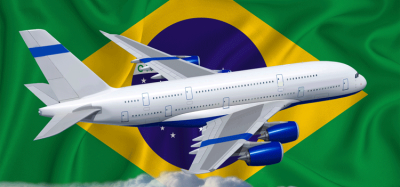The FBI launches a Biometric Center of Excellence to reach its “Desired Path”
- Like
- Digg
- Del
- Tumblr
- VKontakte
- Buffer
- Love This
- Odnoklassniki
- Meneame
- Blogger
- Amazon
- Yahoo Mail
- Gmail
- AOL
- Newsvine
- HackerNews
- Evernote
- MySpace
- Mail.ru
- Viadeo
- Line
- Comments
- Yummly
- SMS
- Viber
- Telegram
- Subscribe
- Skype
- Facebook Messenger
- Kakao
- LiveJournal
- Yammer
- Edgar
- Fintel
- Mix
- Instapaper
- Copy Link
Posted: 16 July 2009 | Jerome M. Pender, Deputy Assistant Director, Operations Branch for the FBI Criminal Justice Information Services Division | No comments yet
The aviation term “desired path” refers to setting a course and then following clear guidance to reach a specific objective. This simple term seemed fitting for an article about how the FBI’s work in biometrics could also bolster aviation security. Semantics aside, whether you carry a badge, pin a pair of wings to your uniform, or work in the multi-faceted world of aviation, we all share a desired path to protect the flying public when they are in our charge. However, reaching this goal requires each of us to follow a different course.
The aviation term “desired path” refers to setting a course and then following clear guidance to reach a specific objective. This simple term seemed fitting for an article about how the FBI’s work in biometrics could also bolster aviation security. Semantics aside, whether you carry a badge, pin a pair of wings to your uniform, or work in the multi-faceted world of aviation, we all share a desired path to protect the flying public when they are in our charge. However, reaching this goal requires each of us to follow a different course.
For the FBI, this course includes applying a variety of biometric technologies from our investigative tool kit. Our journey began with fingerprint identification, then DNA was added, and now other modalities are being explored within the context of privacy laws, policies, and procedures. To ensure a coordinated and strategic approach to the opportunities and challenges that biometrics represent, the FBI established the Biometric Center of Excellence (BCOE) in Clarksburg, West Virginia. The BCOE serves as the focal point for the FBI’s biometric efforts.
Because traditional document-based identifiers (e.g. birth certificates, driver’s licenses) are not tamper-proof, government and industry alike are turning to biometrics to reinforce their identification and verification capabilities. This is especially important for the law enforcement community because biometrics can help prosecute the guilty, exonerate the innocent, or protect against a terrorist or criminal threat. The application of biometrics in the aviation industry is different but equally important and ranges from identifying employees and flight crews, protecting public areas, and verifying passenger identities. Whichever world you hail from, law enforcement or aviation, biometrics are the way of the future and the future is now.
About biometrics
Every human being has unique physical characteristics that define who they are – it’s what makes you, you. Biometrics are physical characteristics used to identify someone or verify the claimed identity of an individual and include:
- Fingerprints – The most widely used biometric technology, fingerprint recognition systems extract features from impressions made by distinct ridges of the fingerprint. The FBI established a national paper based repository in 1924. Fingerprint automation began in the 1960s with the advancement of computing technologies, which made possible the creation of the FBI’s Integrated Automated Fingerprint Identification System (IAFIS) in 1999. The IAFIS is managed by the FBI’s Criminal Justice Information Services (CJIS) Division and contains the fingerprints and corresponding criminal history information for more than 63.5 million subjects, and growing. The Next Generation Identification is a multi-year effort to upgrade and expand the IAFIS to eventually include other biometric modalities.
- DNA – Nuclear DNA is found in the nucleus of the cell; mitochondrial DNA in the mitochondria. The benefit of using DNA as a biometric identifier is the level of accuracy offered: the chance of two individuals sharing the same nuclear DNA profile is often less than one in a hundred billion with 13 loci analysed. The DNA Identification Act of 1994 formalised the FBI’s authority to establish a National DNA Index System (NDIS) for law enforcement purposes. Today, 183 public law enforcement laboratories participate in NDIS across the United States. Internationally, 45 law enforcement laboratories in 31 countries use the Combined DNA Index System software for their own database.
- Face – Individuals are identified by analysing facial characteristics, which cannot be easily changed, and analysing the distance between face landmarks. Face images are captured in still photographs and from videos and compared. Face is the only biometric technology used for verification, identification, and surveillance purposes.
- Palmprints – This technology maps features of a person’s hand and measures all the creases on the palm. The FBI is currently evaluating the requirements for a National Palm Print system with a central, national repository for palmprint data, which can be used to identify latent palmprints at crime scenes.
- Iris – This technology measures the unique patterns of the iris, the colored ring around the pupil which contains approximately several hundred distinct characteristics and is a rich source of biometric data.
- Voice – Speaker recognition systems capture snippets of a person’s speech either by having them talk into a microphone and repeat a set of phrases. A template is generated and stored for future comparisons.
Over the last decade, we have seen an explosion in both interest and the application of biometrics in government and industry. The primary application has been access control and most agencies and companies have developed biometric systems to meet their narrow objectives. However, to meet today’s challenges, biometric technology must mature into more robust and scalable systems that have the capability to interconnect, when laws and policies allow.
The BCOE Mission
The BCOE is working to bridge the “biometric capability gap.” Early efforts are focused on sponsoring targeted applied research; supporting test and evaluation and the development of new standards; launching new training initiatives as needed; and collaborating across academia, government, and industry. The BCOE is also actively supporting the interagency work of the National Science and Technology Council’s Subcommittee on Biometrics and Identity Management.
Early BCOE accomplishments include:
- Sponsoring a range of research, collection, and testing efforts associated with fingerprints, facial recognition, speech recognition, and biometric collection standards;
- Entering into a Cooperative Agreement with West Virginia University, which is serving as the “academic arm” of the BCOE by conducting research and serving as a liaison to the academic research community;
- Establishing and leading the Facial Identification Scientific Working Group (FISWG);
- Supporting collaboration and standards development through the coordination of a speaker recognition workshop; and
- Collaborating on the establishment of a new 360,000 square foot facility on the FBI’s Clarksburg, West Virginia campus. The Biometric Technology Center will bring together the BCOE and the Department of Defense’s Biometric Task Force.
How the FBI’s biometric efforts can contribute to aviation security
Many federal agencies have long played a part in the aviation industry. However, post 9/11, our responsibilities have evolved, grown, and more frequently intersect. The FBI’s core mission is to protect and defend the United States against terrorist and foreign intelligence threats, to uphold and enforce the criminal laws of the United States, and to provide leadership and criminal justice services to state, federal, municipal, and international agencies and partners. The terrorist attacks of September 11, 2001, taught us a number of lessons about aviation security, least of which is that no one agency can do it all when it comes to safeguarding our skies, planes, passengers, and infrastructure.
In November 2001, a government Aviation Security Biometrics Working Group, comprising eight government agencies, including the FBI, published a report on the efficacy of incorporating biometric technology into aviation security. That report outlined four distinct aviation security applications:
- Identity verification of employees and ensuring that access to secured areas within an airport is restricted to authorised personnel;
- Protection of public areas in and around airport using surveillance;
- Identity verification of passengers boarding aircraft; and
- Identity verification of flight crews prior to and during a flight.
A number of FBI biometrics initiatives are already underway that could support aspects of these four applications.
- In the “protection of public areas through surveillance” application, the BCOE-sponsored research and test and evaluation work and its establishment and support of the FISWG support of standards, is expected to advance the facial recognition capabilities. The BCOE also plans to support training efforts as this capability matures.
- In the “identity verification” security applications, the FBI is supporting the Transportation Security Administration (TSA) and strengthening airport security by supporting background checks on airport employees. The FBI’s biometric research and test and evaluation initiatives could prove useful to TSA’s ongoing work testing fingerprint and iris scanning technology at airports across the U.S. for access control purposes. In addition, the FBI supports the U.S. Customs and Border Protection programmes at airports and other ports of entry, where non-citizens’ fingerprints are checked against the FBI’s Criminal Master File and those records of wanted individuals and other persons of concern are made available for immediate searching to allow a rapid response to the ports of entry.
Protecting privacy
Privacy advocates have raised concerns over government’s efforts, both at home and abroad, regarding the development and deployment of biometric technologies. There is apprehension over creating large databases and the potential for misuse. The FBI and other government agencies work under strict Privacy Act of 1974 guidelines, which limit federal agencies’ collection, use, and disclosure of personal information.
The reality is that biometrics, when used properly, protect privacy by providing better protection of personal data. In just one year, more than 15 million Americans fell prey to identity theft, with resulting losses to individuals and businesses estimated at $221 billion worldwide and counting. Broader use of biometrics could reduce that number. Moreover, because biometric data is uniquely personal, there are circumstances where its collection, storage, and usage by individuals, employers or government agencies can protect an individual’s records pertaining to health, employment, and financial history.
Ideas welcome
As a key provider of biometric and identity services to a broad range of stakeholders, the FBI collaborates with and serves a wide constituency including other federal agencies, state and local law enforcement, academia, industry, the Intelligence/National Security communities, select international counterparts, and the American taxpayer. Our primary mission is to foster collaboration and information sharing for the law enforcement and national security communities. We are not in this alone, nor do we want to be. The BCOE is looking for fresh ideas and innovative concepts to further our mission. This benefits everyone. We welcome your feedback and encourage visitors to log on to BCOE’s website on www.BiometricCoE.gov or send an email to [email protected].
References
1. Trinen, Nicholas. “Identity Theft: Stats and Cases.” Crime Suite 101. August 1, 2007. Available at: http://crime.suite101.com/article.cfm/identity_theft_stats_and_cases#ixzz0AAPf8nGu

















